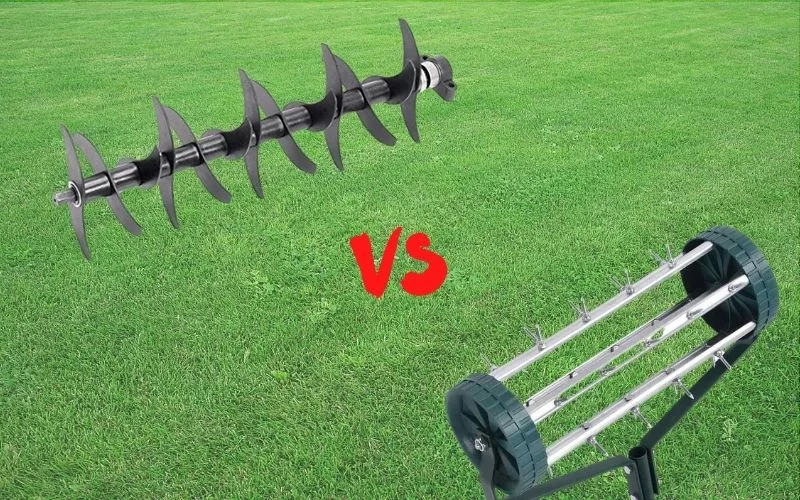
- what-is-lawn-dethatching-and-why-it-matters-lawn-dethatching-explained
- understanding-lawn-aeration-how-does-it-work-and-why-is-it-important
- the-real-difference-between-lawn-dethatching-and-aeration
- when-to-dethatch-vs-when-to-aerate-common-mistakes-and-pro-tips
- real-case-study-from-our-community-lawn-transformation-story
- expert-advice-and-recommendations-choose-whats-best-for-your-lawn
1. What is Lawn Dethatching and Why It Matters: Lawn Dethatching Explained
If you’ve ever run your hand across your lawn and noticed a dense, spongy layer just above the soil, you’ve found what lawn experts call “thatch.” This is a build-up of dead grass, roots, and organic debris. While a thin layer of thatch can be beneficial by insulating soil and protecting roots, too much of it chokes out nutrients, water, and air, leading to a tired, patchy lawn. Dethatching is the process of removing this thick layer, using either manual rakes or powered dethatchers. It’s a bit like spring cleaning for your yard—a tough but satisfying job that can instantly transform a lackluster lawn. Many homeowners are shocked by how much thatch is hiding below the surface, especially after the first time they try dethatching. For those looking for high-quality dethatching tools and services, our team at Lawn Care Services is always ready to help you find the right fit for your yard.
2. Understanding Lawn Aeration: How Does It Work and Why Is It Important?
Lawn aeration tackles a different issue—soil compaction. Over time, the weight of foot traffic, pets, and even just rainfall can press the soil down, making it harder for roots to breathe and absorb water. Aeration solves this by punching small holes into the ground, loosening the soil and allowing nutrients, water, and oxygen to flow more freely. There are two main types: spike aerators, which poke holes, and core aerators, which remove small plugs of soil. Aeration is like opening windows in a stuffy room, letting your lawn “breathe” again. Especially after a long, active summer, aeration can help tired grass bounce back stronger than ever. If you want your yard to look like the lush, green lawns you see in magazines, periodic aeration is often the secret ingredient. At Lawn Care Services, we offer expert guidance and the latest aeration equipment for every lawn type.
3. The Real Difference Between Lawn Dethatching and Aeration
It’s easy to mix up dethatching and aeration, but they solve very different problems. Dethatching removes the layer of organic debris that can smother your grass, while aeration breaks up compacted soil below the surface. Think of dethatching as clearing a blocked filter, and aeration as loosening the packed dirt underneath your carpet. Both help nutrients, air, and water reach the grass roots, but the approach and the timing are unique. In practice, a healthy lawn may occasionally need both—but not always at the same time. Dethatching is best when you notice a thick, brownish mat building up, while aeration is crucial when water starts pooling or grass feels hard and unyielding underfoot. Lawn Care Services can help you assess your yard’s condition and recommend a tailored approach so you invest your effort where it really counts.
4. When to Dethatch vs. When to Aerate: Common Mistakes and Pro Tips
One common mistake is treating dethatching and aeration as interchangeable tasks. In reality, using the wrong method at the wrong time can stress your lawn even further. For instance, dethatching in the heat of summer may damage already fragile grass, while aerating waterlogged soil can cause further compaction. A practical tip: check for thatch buildup in early spring or early fall by digging out a small section of your lawn. If the thatch layer is thicker than half an inch, it’s time to dethatch. Aeration, on the other hand, is often best in the fall or after heavy use, like after a big backyard party. Many DIY enthusiasts have shared stories of transforming their lawns simply by timing these tasks right. For personalized timing and expert tools, consult our team at Lawn Care Services—we know local conditions and can recommend what works best in your climate.
5. Real Case Study from Our Community: Lawn Transformation Story
Let’s bring this to life with a real example. In our Lawn Care Services community, a local homeowner—let’s call her Jane—was frustrated by her patchy, straw-like lawn. She had been watering and fertilizing regularly but saw little improvement. Our experts visited her yard and quickly diagnosed a thick thatch layer, plus signs of compacted soil from years of backyard soccer games. With a combination of dethatching and core aeration, Jane’s lawn made an incredible comeback. Within weeks, fresh green shoots emerged, and by the next season, her yard was the envy of the block. Stories like Jane’s show that the right diagnosis and proper lawn care techniques—backed by the right tools and professional support—can work wonders.
6. Expert Advice and Recommendations: Choose What’s Best for Your Lawn
Choosing between lawn dethatching and aeration doesn’t have to be confusing. The key is to understand what your lawn really needs. If you’re dealing with thick, spongy buildup, dethatching is your answer. If the ground feels hard or grass is struggling despite regular care, aeration may be the solution. Remember, every yard is unique—factors like grass type, local climate, and usage all play a role. For expert guidance tailored to your specific lawn, trust the team at Lawn Care Services. We offer the best products, advice, and hands-on help to ensure your lawn stays healthy and vibrant all year round. Take the guesswork out of lawn care and let us help you achieve the lush, green yard you’ve always wanted.








